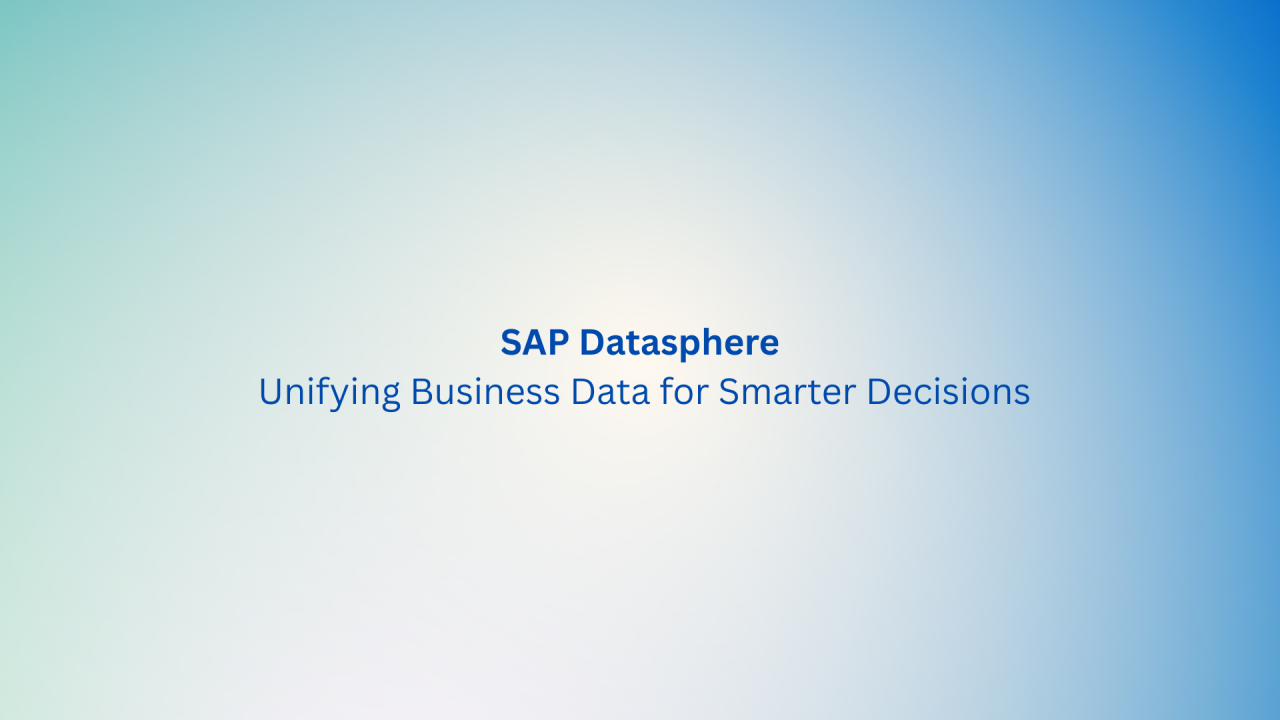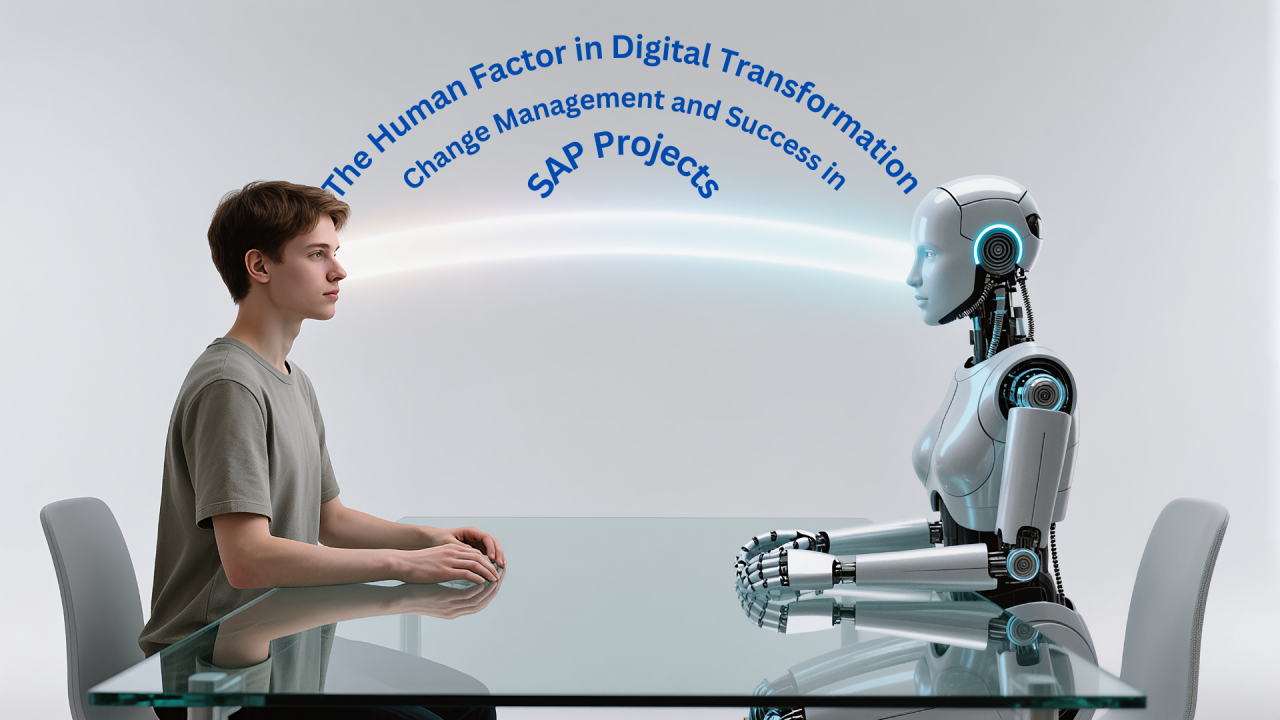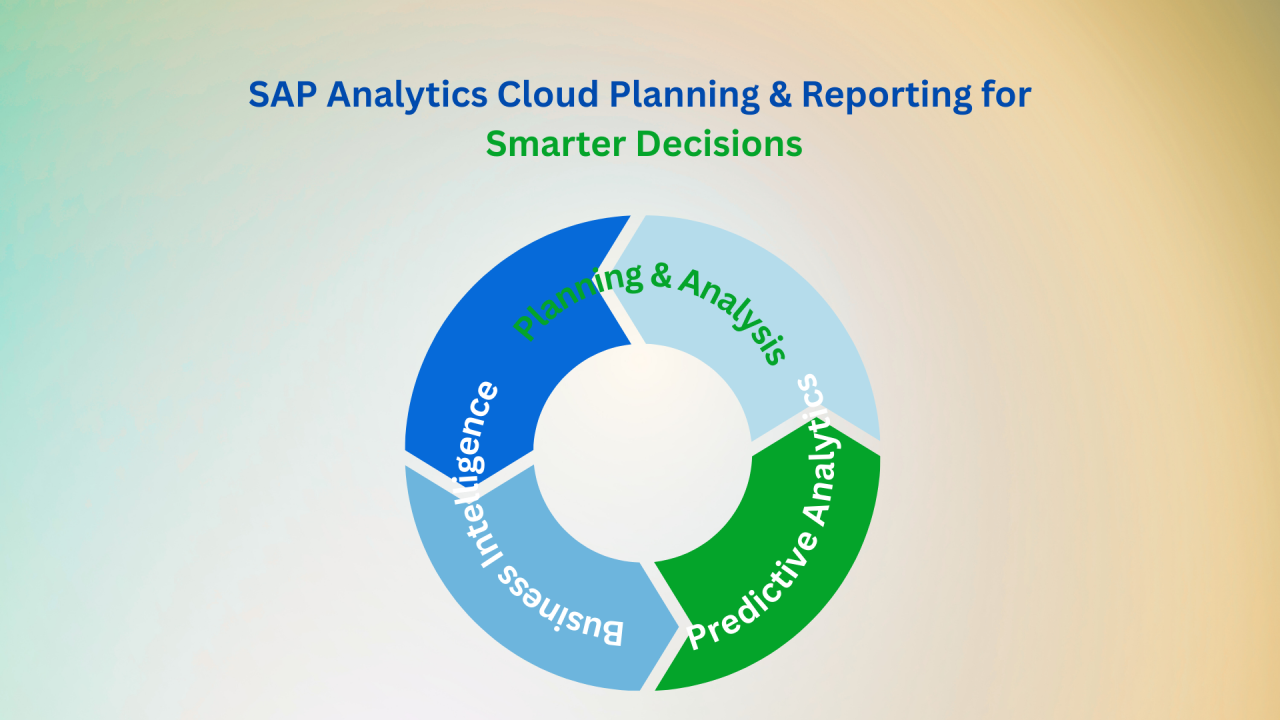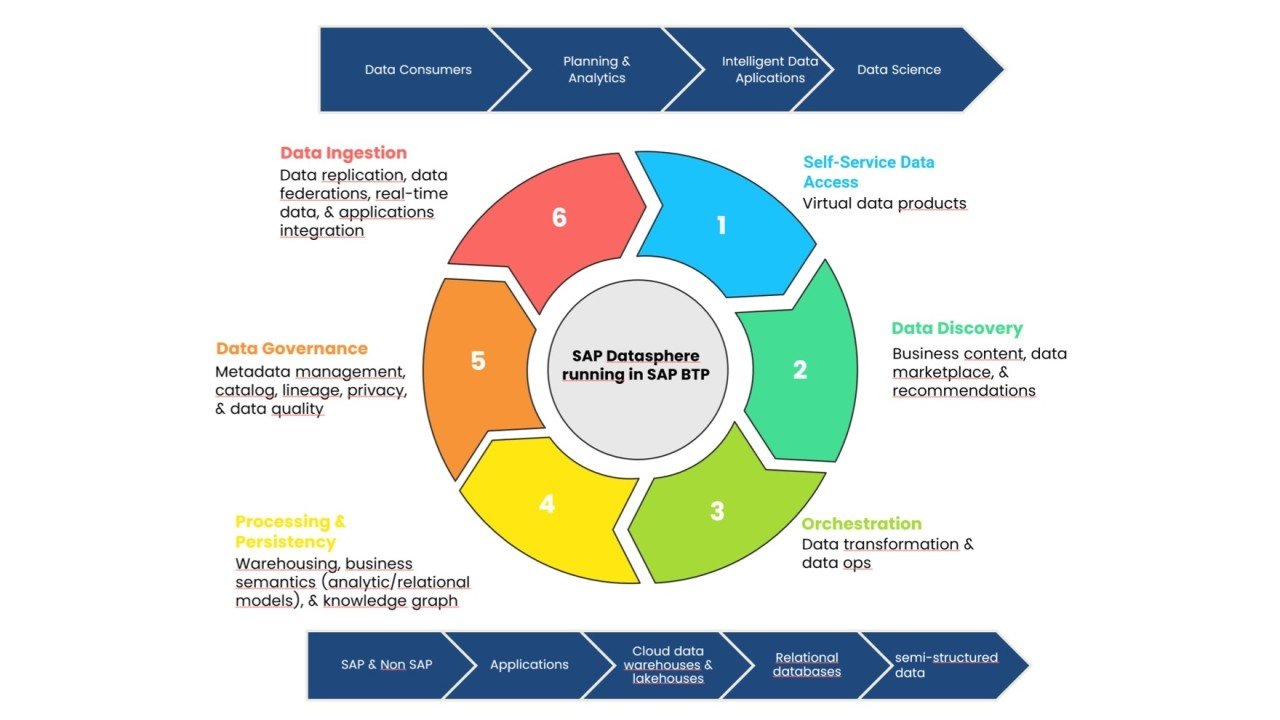Modern organisations generate more data than ever, yet too much of it remains locked in isolated systems. SAP Datasphere provides a single semantic layer that keeps data where it is, adds business context and delivers trusted information to analytics, planning and AI workloads. Recent updates such as the Horizon user experience and the Joule generative-AI assistant make the platform an even stronger foundation for fast, well-informed decision-making.
The hidden cost of fragmented data
Multiple clouds, on-premises databases and SaaS applications have multiplied the number of data stores. Analysts now spend a significant share of their time reconciling figures instead of acting on them, while disconnected definitions encourage “spreadsheet logic” that undermines trust. Poorly governed data also feeds inaccurate prompts into generative-AI models, which can lead to unreliable answers. SAP Datasphere addresses these risks by exposing a live, context-rich “Business Data Fabric” without heavy replication.
What sets SAP Datasphere apart
Business Data Fabric
- Federated access keeps source systems in place and removes the need for mass data movement.
- A business semantic layer preserves calculations, hierarchies and currency logic, so users query terms such as “Net Sales” rather than table names.
Governance and lineage
Integrated lineage tracking and optional Microsoft Purview integration give auditors a clear view from a dashboard value back to the original transaction.
Expanding connector library
Over twenty new connectors, including MongoDB Atlas and Google BigQuery, now bring modern data lakes and operational stores into the platform.
What is new in 2025 – Horizon and Joule
The 2025 release cycle focuses on user productivity and AI readiness. The Horizon interface introduces a cleaner colour palette, simplified icons and higher-contrast components, which shorten navigation time and improve accessibility. At the same time, Joule, SAP’s generative-AI assistant, gains a “prompt-to-model” capability that can translate a plain-language description of a data domain into a first-pass semantic model in minutes, cutting modelling effort by roughly forty per cent in early adoption programmes. Joule also orchestrates multi-step tasks across external engines such as Microsoft Copilot and Google Gemini, choosing the most suitable model for each step. Together, these features move Datasphere beyond storage, turning it into an AI-ready decision layer.
Reference architecture – end-to-end data flow
- Source connections: ERP, CRM, IoT feeds, files and modern data lakes such as BigQuery or Amazon S3.
- Business Data Fabric (Datasphere): Federation or selective replication, data-quality rules and version management.
- Semantic model: Business logic, hierarchies and currency conversions defined once and reused everywhere.
- Consumption layer: SAP Analytics Cloud via live connection. Joule natural-language queries. Third-party BI tools through ODBC or JDBC.
Each department receives its own view while data remains consistent across the enterprise.
How we can help
As an SAP consultancy, Notium offers a Fabric Fast-Track package that includes:
- A live Datasphere tenant connected to as many as five data sources.
- A production-ready semantic model and SAP Analytics Cloud dashboard.
- A tailored Joule prompt library for your finance or supply-chain teams.
Conclusion
SAP Datasphere brings scattered data into a single, context-rich fabric that serves real-time analytics and generative AI. The sooner your information speaks the same language, the faster your organisation can listen, learn and act. Discover how Notium can help your organisation listen, learn, and act faster with SAP Datasphere. Get in touch with us to begin your transformation.





